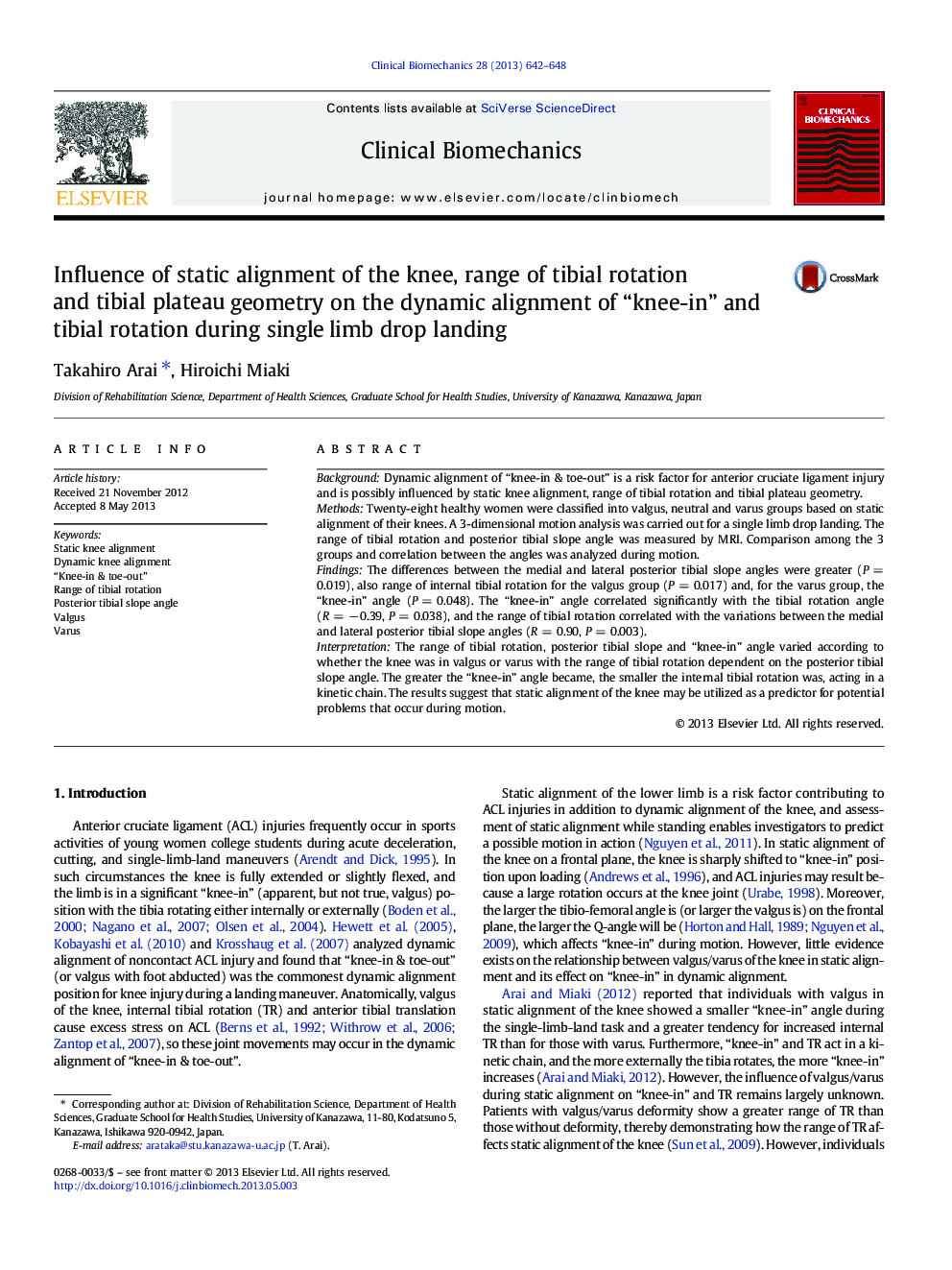| Article ID | Journal | Published Year | Pages | File Type |
|---|---|---|---|---|
| 4050658 | Clinical Biomechanics | 2013 | 7 Pages |
BackgroundDynamic alignment of “knee-in & toe-out” is a risk factor for anterior cruciate ligament injury and is possibly influenced by static knee alignment, range of tibial rotation and tibial plateau geometry.MethodsTwenty-eight healthy women were classified into valgus, neutral and varus groups based on static alignment of their knees. A 3-dimensional motion analysis was carried out for a single limb drop landing. The range of tibial rotation and posterior tibial slope angle was measured by MRI. Comparison among the 3 groups and correlation between the angles was analyzed during motion.FindingsThe differences between the medial and lateral posterior tibial slope angles were greater (P = 0.019), also range of internal tibial rotation for the valgus group (P = 0.017) and, for the varus group, the “knee-in” angle (P = 0.048). The “knee-in” angle correlated significantly with the tibial rotation angle (R = − 0.39, P = 0.038), and the range of tibial rotation correlated with the variations between the medial and lateral posterior tibial slope angles (R = 0.90, P = 0.003).InterpretationThe range of tibial rotation, posterior tibial slope and “knee-in” angle varied according to whether the knee was in valgus or varus with the range of tibial rotation dependent on the posterior tibial slope angle. The greater the “knee-in” angle became, the smaller the internal tibial rotation was, acting in a kinetic chain. The results suggest that static alignment of the knee may be utilized as a predictor for potential problems that occur during motion.
